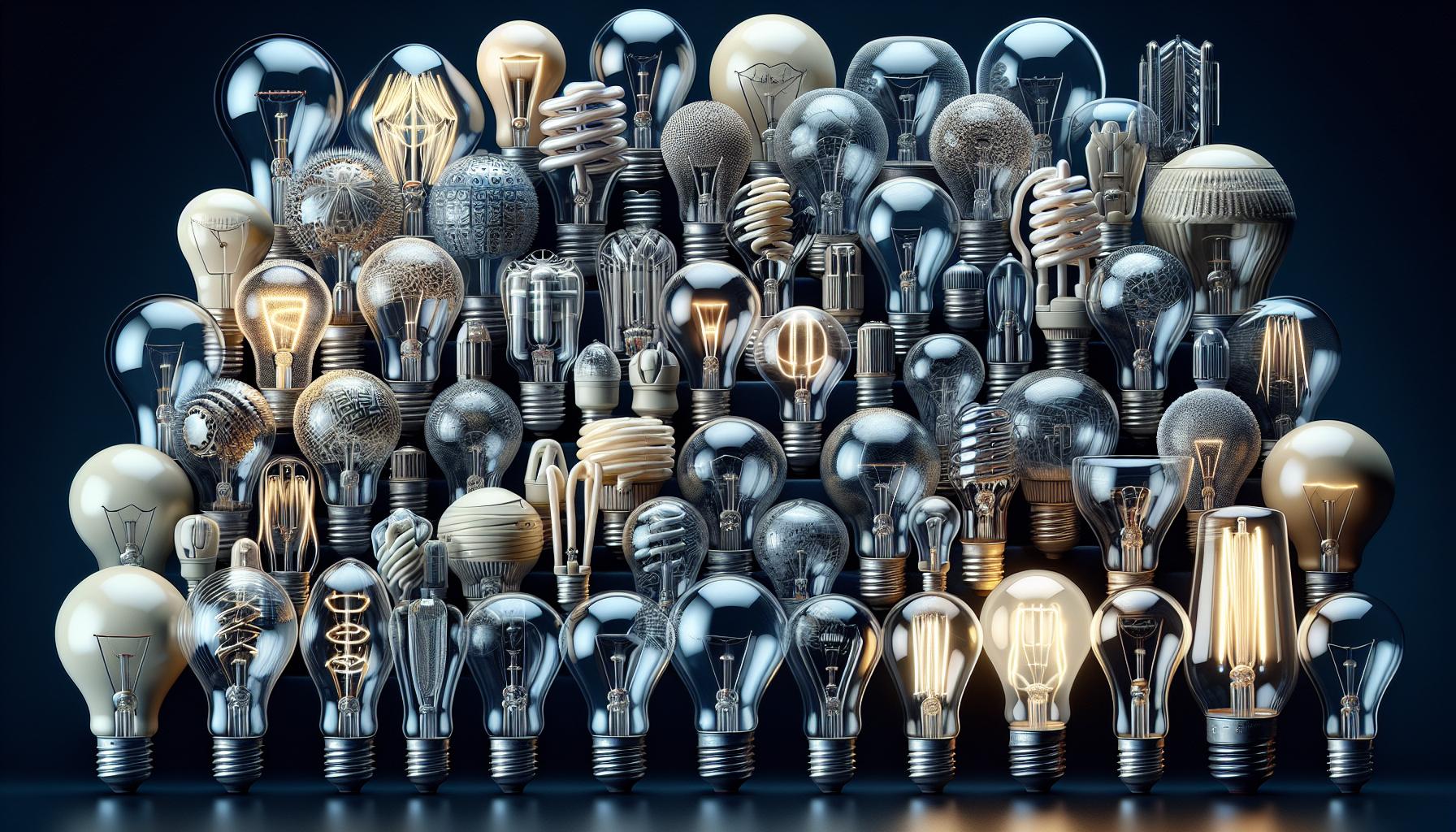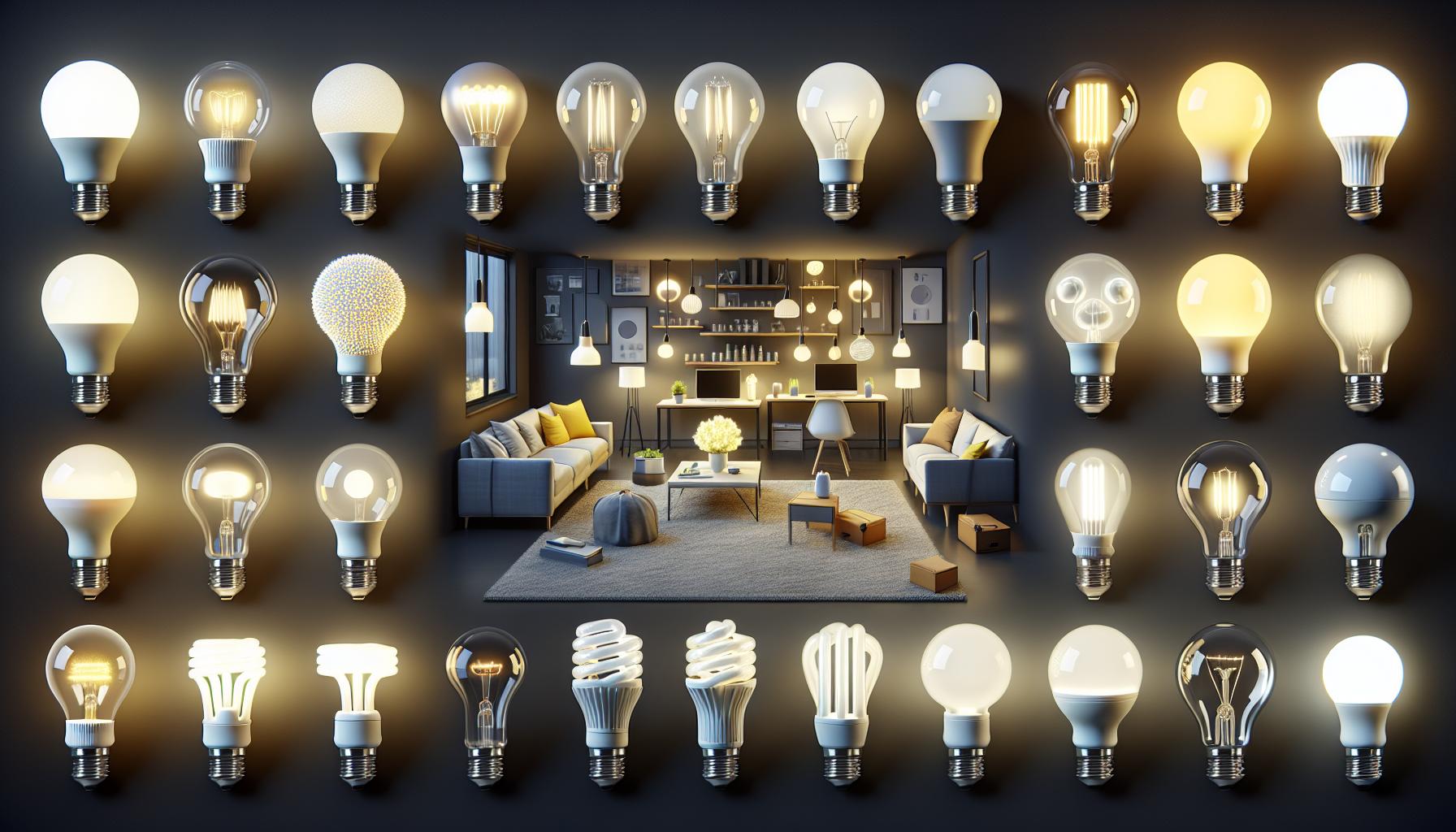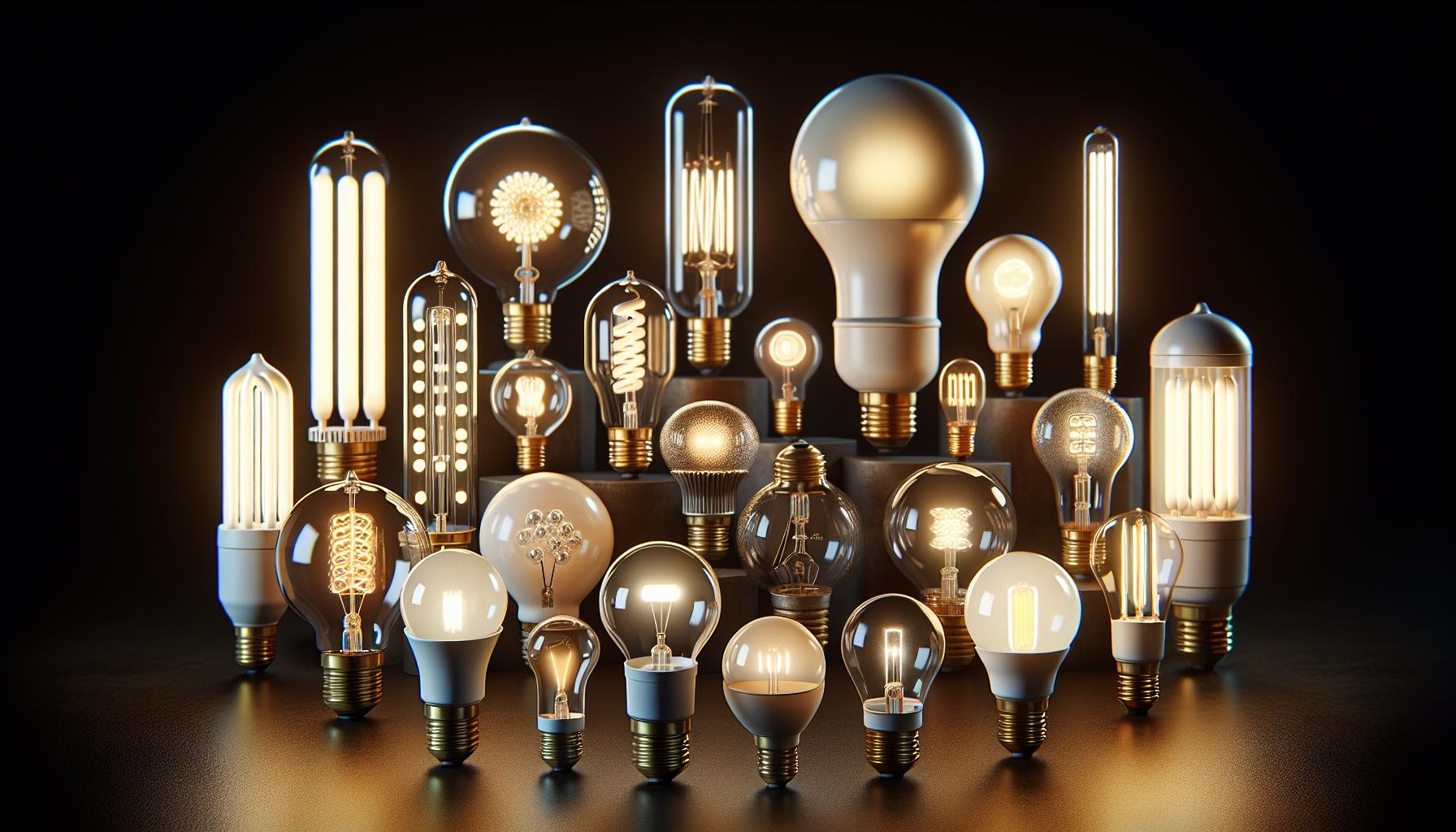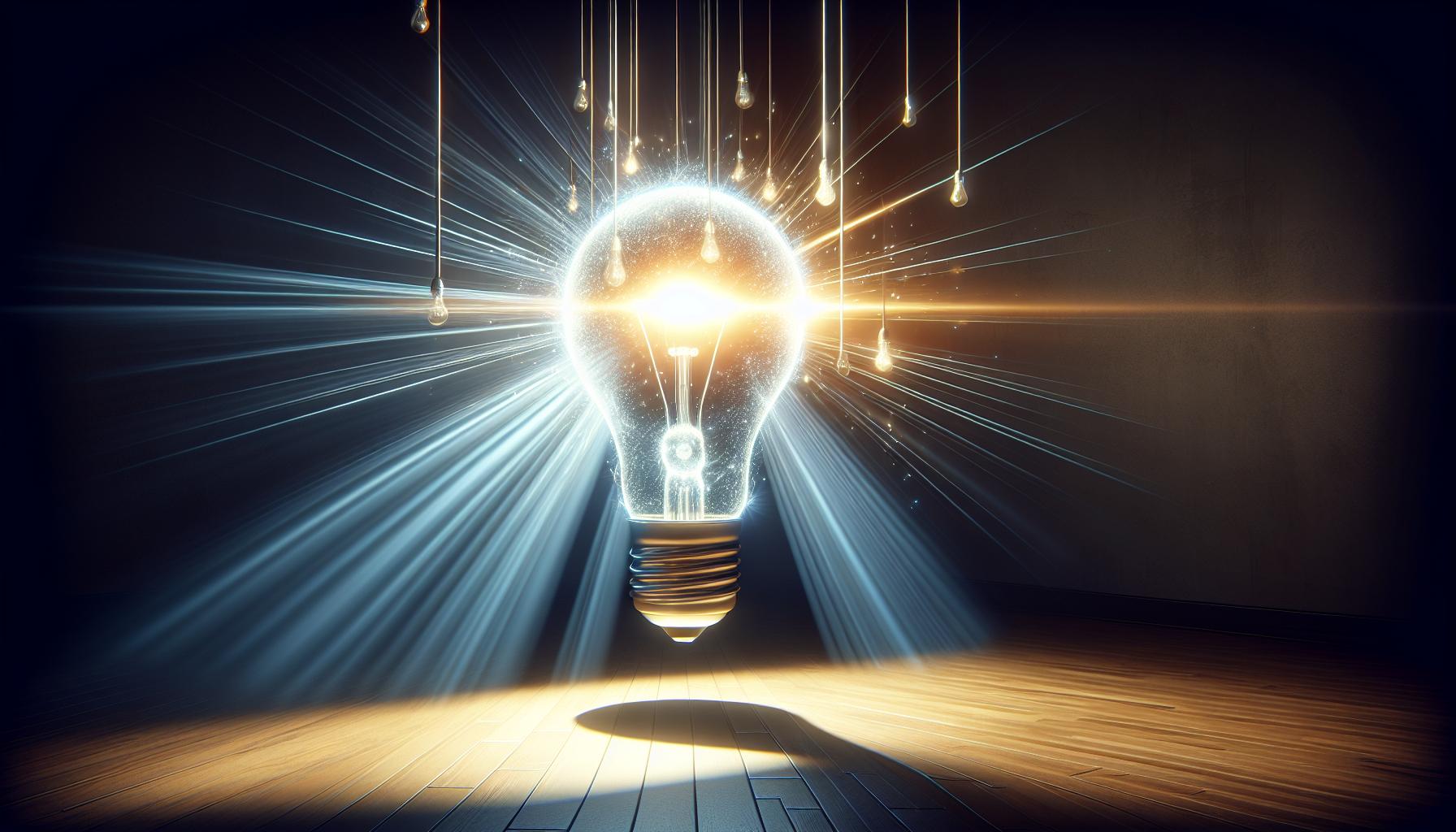Ever found yourself pondering whether a light bulb falls into the category of goods or services? It’s not as straightforward as flicking a switch, is it? Let’s shed some light on this illuminating topic and find out just where a light bulb fits in the grand scheme of things.
You buy them, screw them in, and voilà, your room’s aglow. But is there more to it than meets the eye? Stick around as we delve into the nitty-gritty of what makes a light bulb not just a household item, but a key player in the economics of goods and services.
Is a Light Bulb a Good?
When you walk into a store looking for light bulbs, you’re met with rows of neatly packaged items. Here lies the primary argument for classifying light bulbs as goods: they are tangible products. As physical items that you can pick up, install, and utilize in your DIY lighting projects, light bulbs fit neatly into the goods category.
The characteristics that define goods are all present in light bulbs. They are manufactured, stored, and sold in retail and wholesale markets, much like any other product you’d have on your shopping list. When you purchase a light bulb, you acquire ownership. That’s a telltale sign that what you’ve got is a good. The lifecycle of a light bulb also mirrors that of typical goods, going from production to distribution, and eventually, to consumption. Whether it’s for creating a warm ambiance in your living room or brightening up your workspace, light bulbs serve a practical purpose in your daily life.
Moreover, light bulbs are a classic example of a consumable good. Eventually, they’ll burn out and require replacement. During their lifespan, they provide continuous utility, emitting light and transforming the feel of any space. Their value is not simply in existence but in the function they perform every time you flick that switch.
Think of the last time you embarked on a home improvement project. Whether it was as simple as replacing a burnt-out bulb or as complex as redesigning your kitchen lighting, your go-to supplies invariably included light bulbs. This is further evidence of their role as goods; they are central components in the products and environments you craft with your own hands, reflecting both utility and aesthetic value.
Light bulbs also have a whole economy built around them, with specialized brands, technology advancements, and performance claims that influence consumer choice. When you’re shopping for light bulbs, you’re not just buying a piece of hardware—you’re selecting an item with specific characteristics such as brightness levels, energy efficiency, and color temperature, all of which play a pivotal role in how you experience your space.
Remember, every time you’re perusing the aisle for the perfect bulb to complete your lighting vision, you’re engaging in the market for goods. Light bulbs may seem like simple everyday items, but their classification as goods has a significant impact on how they’re marketed, sold, and ultimately, how they light up your life.
Characteristics of a Good
When you’re out shopping for light bulbs, what exactly classifies them as goods? It’s important to understand the defining characteristics of a good to see where light bulbs fit.
Tangibility is a key attribute of goods. Unlike services, you can feel, see, and hold goods. Light bulbs are unquestionably tangible. You can physically pick up a package of light bulbs off the shelf, inspect them, and take them home. They occupy space and have mass, ticking the box for tangibility.
Another important aspect is transferability. Goods must be able to change hands from seller to buyer. Light bulbs are often purchased in stores or online and then delivered to your doorstep. Once you’ve paid for them, they’re yours to install, use, and eventually replace.
Durability is a feature that differentiates various types of goods. Light bulbs are typically classified as nondurable goods. This means they have a limited lifespan and will be used up or need to be replaced after a certain period. The lifespan of a light bulb can range from a few months to several years, depending on usage and type.
Let’s not forget value. Goods carry an economic value, which is why you have to pay for light bulbs. The value is influenced by factors such as brand reputation, demand, technology, and cost of production. Advances in technology have introduced various types of light bulbs, like LEDs and CFLs, that are more energy-efficient and cost-effective in the long run despite a higher initial purchase cost.
« Can Light Bulbs Cause Seizures? Safeguard Your Home with These Tips
How to Check Light Bulb Size: Quick Guide to Perfect Fit & Brightness »
Consider this, as a DIY and lighting enthusiast, you recognize that light bulbs provide utility. You buy them for the function they serve – to illuminate your spaces. This utility transforms a simple light bulb into a good with intrinsic value.
Keep in mind that light bulbs are also interchangeable. You can switch between different brands and types, which means they’re standardized to fit specific fixtures and purposes. Whether it’s a warm incandescent glow for your living room or a bright LED for your workshop, you have the option to select the right bulb for your needs.
Evaluating the Features of a Light Bulb
When you’re tackling a DIY project, choosing the right light bulb is as essential as selecting the right tools. Each bulb comes packed with its own set of features that define its performance, efficiency, and suitability for a given task. It’s important to consider several key aspects.
Lumens and Watts highlight the brightness and energy consumption of bulbs:
- Lumens measure the amount of light produced.
- Watts indicate energy used.
Typically, you’re after a bulb that gives you the most lumens with the least watts – that’s efficiency.
Next, let’s get into Color Temperature. Measured in Kelvin, color temperature affects the look and feel of your space:
- 2700K – 3000K: Warm white, perfect for cozy environments.
- 3500K – 4100K: Cool white, suits workspaces.
- 5000K – 6500K: Daylight, simulates natural sunlight.
Your choice really boils down to the ambiance you’re aiming to create.
Another critical feature is the bulb’s Lifespan. Light bulbs have varying life expectancies, generally listed in hours. LED bulbs can often last for over 25,000 hours, while incandescent bulbs might only manage 750 – 2,000 hours. For a cost-effective, long-term lighting solution, LEDs can be a savvy choice.
Dimmability is also a key factor. Not all light bulbs can be dimmed, so if you want to adjust your lighting to match your mood or task, make sure you check this before purchasing.
Bulb shape and base size matter significantly, too. The wrong fit just won’t work. Options include the traditional A19 shape, floods (BR30/40), and more specialized types like candelabras (E12) or tubes (T8). Always match your fixture’s requirements.
Lastly, let’s talk about Energy Efficiency and bulb types. LEDs reign supreme in energy conservation, followed by compact fluorescent lights (CFLs), with incandescent and halogen bulbs trailing behind.
The right bulb illuminates your home effectively while keeping costs down, a double win for any DIY enthusiast. With an array of choices, ranging from smart to eco-friendly options, your lighting can be as innovative as your projects.
Light Bulb as a Tangible Product
When you’re drilling down into the nuts and bolts of light bulbs, you’ll quickly find that they overwhelmingly fall into the category of tangible goods. What does that mean for you? Essentially, when you purchase a light bulb, you’re acquiring a physical item with a specific set of properties you can evaluate even before it lights up your room.
Let’s geek out a bit and look at what makes light bulbs such hands-on products. First off, they’re manufactured using a mix of glass, metal, and various other materials crafted to produce not just light but to do so reliably over time. You’ll notice they come in a variety of shapes and forms: A19, A21, and the compact yet powerful MR16 spotlight, just to name a few. You can actually hold these shapes, twist the bulbs into your lamps, and physically interact with them, differentiating them from services.
Then there’s the interaction with other tangible elements – fixtures, switches, and dimmers. A light bulb plays quite nicely with these components, bringing the ensemble to life in a very lit, almost magical way. Think of it as a lead actor in your home’s lighting production. The better the cast, the more stunning the performance.
Bear in mind, the physical lifespan of a bulb can greatly influence your buying choice. While incandescents may bow out after about 1,200 hours, some LED bulbs keep shining for over 25,000 hours. Imagine all the DIY projects you could illuminate in that time!
Speaking of LED bulbs, they showcase their tangible benefits quite clearly when it comes to energy efficiency. By converting electricity into light more effectively, they use less wattage than traditional bulbs for the same level of brightness. You’re not just getting a product; you’re getting a powerhouse of efficiency that is tangible in both form and utility, with a side of cost savings on your energy bill.
Remember, the beauty of a tangible product like a light bulb is that while it may illuminate reflecting upon what makes for a good purchase, its physical presence is a constant reminder of the practical value it adds to your day-to-day life.
Is a Light Bulb a Service?
When you’re knee-deep in a home DIY project, illumination is key, and that’s where the confusion might set in—can a light bulb be classified as a service? While the bulb itself is a tangible item, the actual light it emits could be perceived as a service. After all, you’re not just buying a piece of glass and metal; you’re securing a reliable source of light for your space.
But let’s break it down. A service, by definition, is an intangible commodity; it’s something that’s consumed at the point of sale and does not result in ownership of something physical. When you purchase a light bulb, you own it; you can hold it, move it, and eventually dispose of it. The light, on the other hand, dissipates the moment the bulb is switched off. So, the illumination could be seen as a temporary service—illuminating your room, but not something you retain indefinitely.
To deepen your understanding, consider the entire lifecycle of the product. With every flip of the switch, the bulb provides its ‘service’ of lighting. Look beyond the bulb to the entire lighting system—fixtures, wiring, and switches. Yes, the bulb is a key player, but it’s the entire system that works together to deliver the ‘lighting service’ to your room.
Though it might be tempting to label the light emitted as a service, the electrical energy powering the bulb would fit the service classification more snugly. This energy, provided by your utility company, is indeed a classic service—continuously provided and paid for regularly based on usage.
So while your DIY heart may love the satisfaction of installing a shiny new bulb and bathing a previously dim room in bright, cheerful light, remember that the bulb’s purpose is to translate the service of electricity into the tangible good of light. The bulb, a fixture in your DIY toolkit, is a tangible good that transforms energy, the intangible service, into a necessity for all your at-home projects and beyond.
Light Bulb as an Essential Service
In the world of home DIY projects, light bulbs are often the unsung heroes, quietly doing their job. But when you step back and consider their role, you’ll quickly realize that light bulbs could indeed be classified as an essential service. They’re pivotal in every task, from cooking in your kitchen to reading bedtime stories.
Think about it – without light, you’re literally left in the dark. Illumination is a fundamental need in every household and workplace, enabling you to carry out your daily tasks effectively, safely, and comfortably. It’s this very provision of light, beyond the physical bulb, that blurs the lines between goods and services.
When you think about services, you imagine intangible benefits, right? The light bulb delivers those in spades. The moment you flick that switch, you’re not just lighting up a room; you’re creating an ambiance, enhancing productivity, and ensuring safety. Whether it’s a warm glow for a cozy atmosphere or bright, cool-tinted light for focus and clarity, your light bulb is at your service, quite literally.
Consider also the evolution of smart lighting. These aren’t your granddad’s bulbs! They connect to your Wi-Fi, respond to voice commands, and can even change colors to suit your mood – now if that’s not a service, what is?
Moreover, the fact that light bulbs are now designed to be more energy-efficient aligns them closer to service status. They’re not just objects; they’re active participants in energy conservation efforts, reducing your carbon footprint and saving on those electricity bills.
For all you home DIY enthusiasts, it’s thrilling to explore how lighting can transform a space. Whether installing a vintage-style filament bulb over your reading nook or setting up a series of recessed LED lights for sleek, modern efficiency, you’re crafting an experience. You’re leveraging a tool that epitomizes the marriage of goods and services, enhancing the quality and functionality of your living space.
Remember, next time you’re screwing in a bulb or plotting the lighting for your latest project, think about the service it provides. Your light bulb doesn’t simply ‘exist’; it performs, it adds value, it serves, and that’s what makes it indispensable.
Conclusion
So there you have it! While you’ve always known light bulbs to be the trusty items that light up your home, it’s fascinating to see them in a new light—as active contributors to energy efficiency and your daily comfort. Whether you’re screwing in a new LED bulb or adjusting your smart lighting with a swipe on your phone, you’re not just using a simple product. You’re engaging with a service that’s integral to modern living. Remember, every time you flip that switch, you’re part of a bigger picture of energy conservation and enhanced living. Keep shining bright!
Frequently Asked Questions
What factors should be considered when choosing a light bulb?
When selecting a light bulb, consider its shape, size, compatibility with fixtures, lifespan, and energy efficiency. LED bulbs are recommended for their long lifespan and cost savings.
Are LED bulbs more energy-efficient than traditional bulbs?
Yes, LED bulbs are significantly more energy-efficient than traditional incandescent bulbs, using less electricity and lasting longer, which leads to cost savings over time.
Can light bulbs be classified as a tangible good?
Light bulbs are classified as tangible goods because they are physical items with shape and form that can be purchased and installed in various fixtures.
How do LED bulbs contribute to energy conservation?
LED bulbs contribute to energy conservation by using less power and having a longer lifespan compared to traditional bulbs, reducing the frequency of replacements and the energy used over time.
Could light bulbs be considered a service?
While light bulbs are primarily tangible goods, they could be considered an essential service as they provide critical illumination, enhance productivity, safety, and are part of the smart lighting evolution that supports energy conservation efforts.
What role do light bulbs play in enhancing the quality of living spaces?
Light bulbs actively enhance the quality and functionality of living spaces by providing necessary illumination, increasing the efficiency of everyday activities, and contributing to the overall ambience and comfort of the environment.





